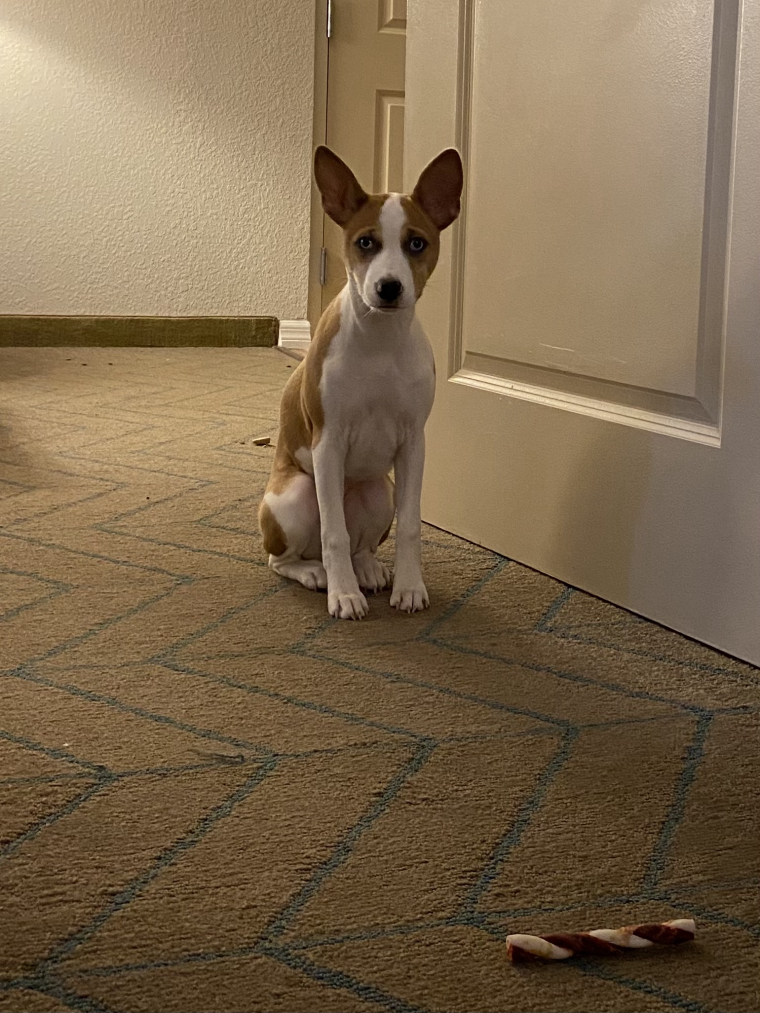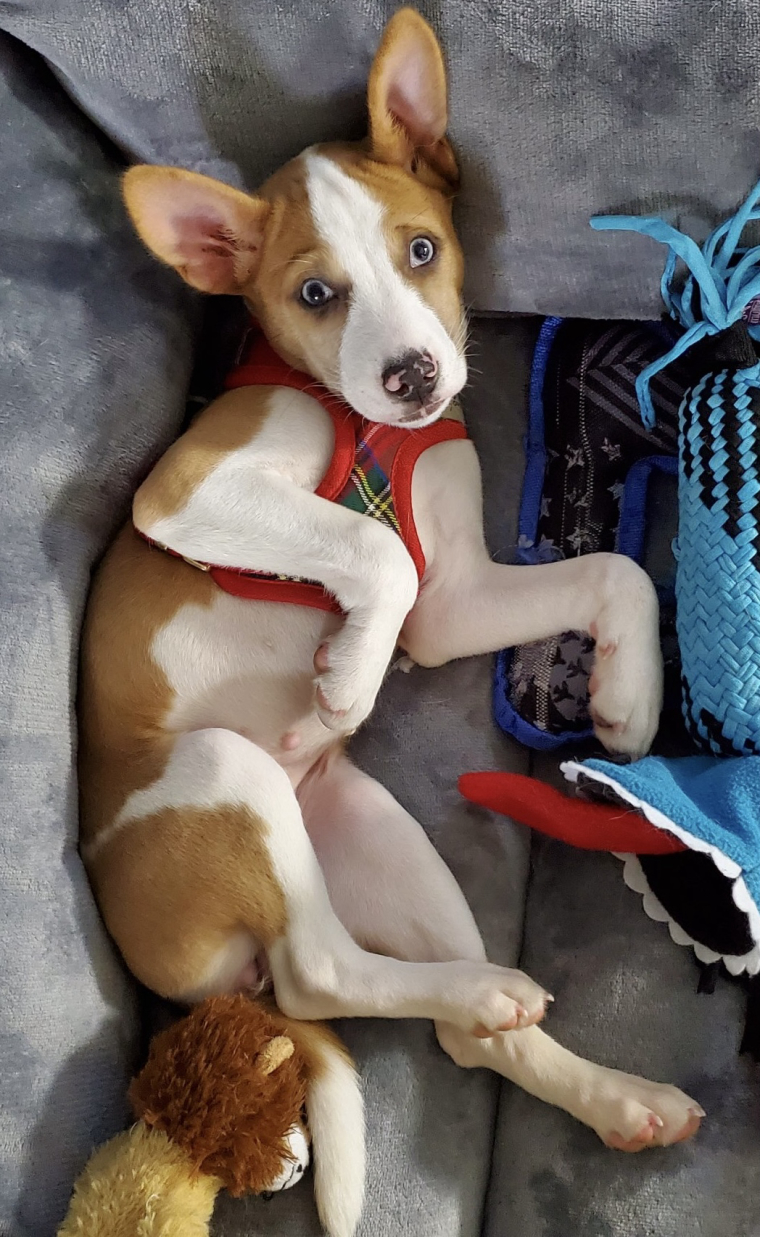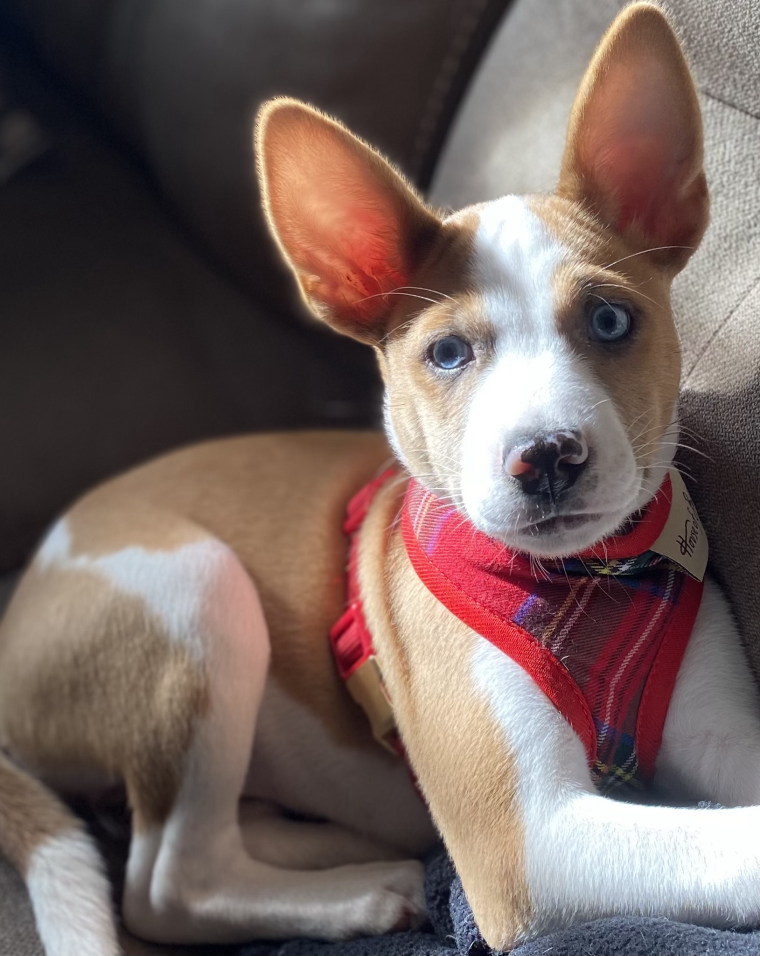Two blue eyes female Basenji
-
There were Basenjis registered as 'cream' in the past. I am not at my computer right now but will look for them in the database later. As I understand it, it was more a very washed out red.
Blue eyes I have seen but only twice and in both cases it was a definite defect. Again I will look up my notes from the owners once I get to my computer again. Will edit this post later today.
Later - back at the computer. .
OK, the blue eyed dogs were suffering Endothial Dystrophy, according to the notes I received at the time from the breeder. This sort of thing doesn't appear on line in the database but I have it all carefully annotated as to source, in a separate file.
Creams were registered in this country by the same breeder as registered the Blues. Affix is 'Sin' for those of you who want to look them up on the d/b. They have also appeared in USA and in Russia where they are more randomly dotted about instead of appearing in the same line. One US line also registers some with the AKC as 'mahogany'. Another term which doesn't appear in the Breed Standard.
-
@mosenji Thank you for sharing the link. Very interesting information!
@zande said in Two blue eyes female Basenji:
As I understand it, it was more a very washed out red.
Makes total sense.... but then, shouldn't we be calling it a "dilute" red/white as opposed to a cream? White paws and tail tip are, after all, specifically a breed standard.
-
@elbrant said in Two blue eyes female Basenji:
but then, shouldn't we be calling it a "dilute" red/white as opposed to a cream? White paws and tail tip are, after all, specifically a breed standard.
But the point is, elbrant, the colour cream is NOT in the breed standard.
-
@elbrant said in Two blue eyes female Basenji:
Makes total sense.... but then, shouldn't we be calling it a "dilute" red/white as opposed to a cream? White paws and tail tip are, after all, specifically a breed standard.
@zande said in Two blue eyes female Basenji:
But the point is, elbrant, the colour cream is NOT in the breed standard.
There are only two colors for all dogs -- black and red -- and natural genetic mutations will change how these combine to produce other colors. So a "cream" or "dilute red" is most definitely in the Basenji gene pool. It's just a recessive for dilution which isn't super prevalent. Seems unproductive to worry too much about it.
At the end of the day it's just a color. Plus it's just very subjective. Plenty of Basenjis have a dilute red coat. This might be described as a "red and white" coat unless it's further on the tail of the distribution in which case some might describe it as a "dilute red" or "cream" coat. And speaking of tails, most Basenji coats which are described as "red and white" are are "tri" coats given the black on the tail. So the designation of a "Tri" coat is more about pattern than color.
DNA will accurately tell you whether a given pup is a Basenji. Using color seems anachronistic.
-
@donc - Black on the tail means they are tri factored (the tri gene is recessive), it is not a tri coat they are red & white with the tri gene factor, meaning if bred to a tri or another red & white with a tri factor they can produce either tri or reds. Tri is a color, it is not a pattern. And many born with black on the tail will lose that black as they age. And there is no disqualification for color in Basenji, in fact other than missing testicle there is no disqualification in the Basenji standard as far as showing.
-
It seems the topic of Cream Basenjis came up right here on this forum back in 2009... Cream Basenjis
-
@tanza said in Two blue eyes female Basenji:
@donc - Black on the tail means they are tri factored (the tri gene is recessive), it is not a tri coat they are red & white with the tri gene factor, meaning if bred to a tri or another red & white with a tri factor they can produce either tri or reds. Tri is a color, it is not a pattern. And many born with black on the tail will lose that black as they age. And there is no disqualification for color in Basenji, in fact other than missing testicle there is no disqualification in the Basenji standard as far as showing.
Tri and R&W are homozygous DD (for dilution) and homozygous kk (for black). All that is left to differentiate them is the Agouti gene which determines pattern. Since at the Agouti locus the red pattern is dominant over the tri pattern, you are correct that a R&W bred to another R&W or to a Tri can produce a Tri. But the agouti locus is about pattern not color, so you are incorrect in saying that "Tri is a color".
-

-
Thank you all for the info and kind words! She’s so wonderful. I am working on uploading her photos!
-

-

-

-

-
replied to annejanine on last edited by
@annejanine
What is her name? She is so precious. Her eyes are captivating and mesmerizing - they are just gorgeous! ❤️🐾
